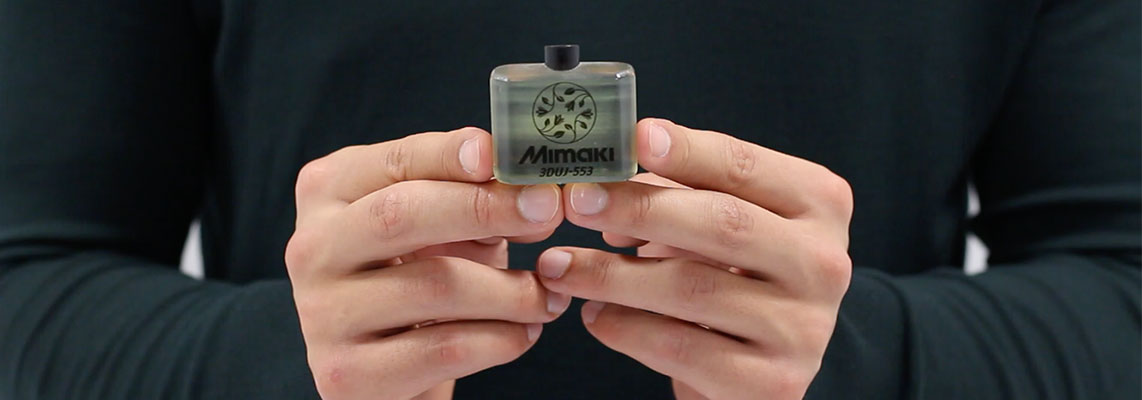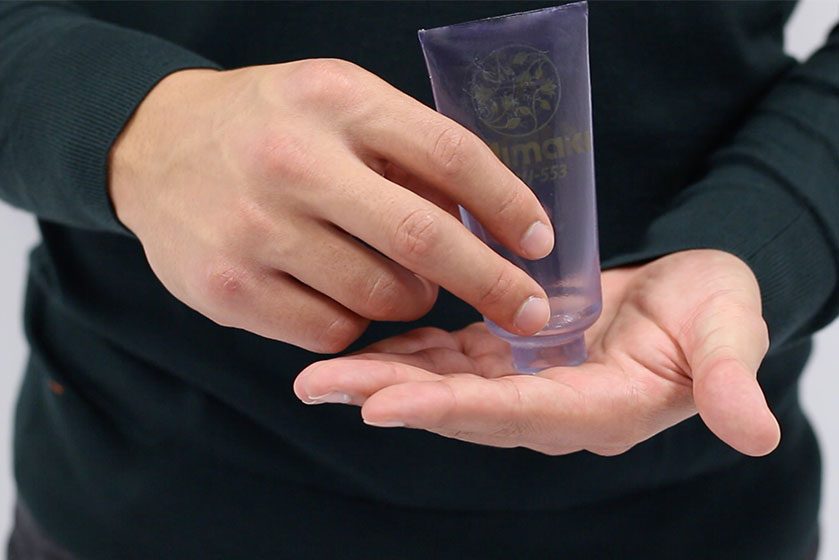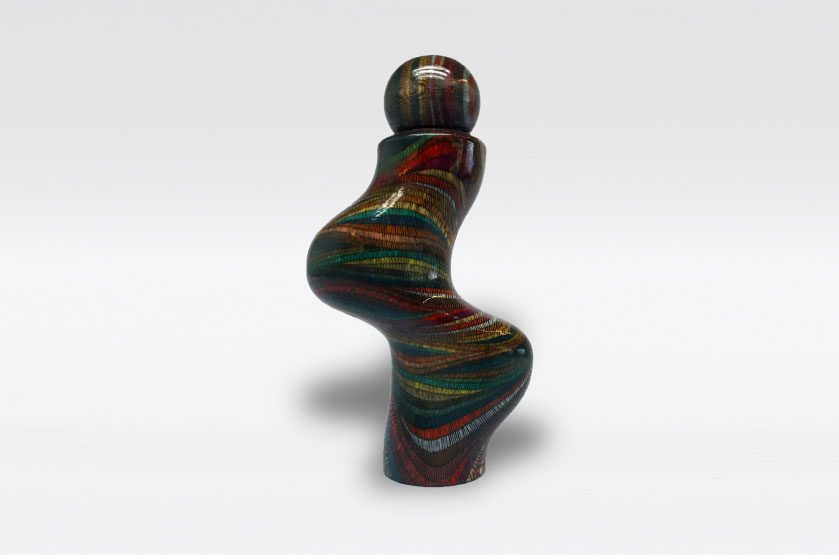
Met 3D-printing kunnen bedrijven razendsnel digitale prototypen van hun producten omzetten naar fysieke objecten. Zo komen ze veel sneller tot het juiste ontwerp en verkorten ze hun time-to-market. Voor prototyping van cosmeticaverpakkingen levert dit geweldige voordelen op. Voorheen had de 3D-technologie echter nog een belangrijke beperking op het gebied van kleuren, maar met de komst van de full-color 3D-printer van Mimaki is dit voorbij.
Bert Benckhuysen, Senior Product Manager at Mimaki EMEA
De cosmetica-industrie is uiterst creatief, wat te zien is in alle prachtige verpakkingen van bijvoorbeeld parfumflesjes, tubes en zalfpotjes. Voor de prototyping van deze producten werd voorheen altijd een modelmaker ingeschakeld. Die kreeg het digitale ontwerp te zien, en ging vervolgens aan de slag met handmatige technieken, waaronder glasblazen, boetseren en zeefdrukken, om het ontwerp minutieus te recreëren. Dit kostte heel veel tijd en geld. Bovendien werden negen van de tien ontwerpen afgekeurd, waardoor de modelmaker vaak opnieuw aan de slag kon met het volgende ontwerp. De laatste jaren wordt 3D-printing steeds meer toegepast in de cosmeticabranche, en neemt hiermee een groot deel van het modelbouwwerk over, in elk geval voor vroege productiemodellen. De belangrijkste beperking die dit lang heeft tegengehouden is dat er voorheen alleen in wit of kleurloos geprint kon worden. Hierdoor was er nog steeds veel inbeeldingsvermogen nodig om een 3D-prototype echt goed te kunnen beoordelen, of het 3D-object moest met de hand beschilderd worden. Dit veranderde drastisch door de opkomst van full-color 3D-printers, en in het bijzonder de Mimaki 3DUJ-553.
Transparante inkt
Toen Mimaki zijn eerste 3D-printer op de markt bracht, was dit vrijwel direct een hit. Zo was het eindelijk mogelijk om met 10 miljoen kleuren te printen, maar bovendien ook met transparante inkt. Een digitaal ontwerp van bijvoorbeeld een parfumflesje, compleet met opdruk en verpakking, kon nu ineens zonder mensenwerk één-op-één met de 3D-printer gereproduceerd worden. Letterlijk een revolutie voor prototyping in de cosmetica-industrie. Nu is het mogelijk om voor allerlei producten, van parfumflesjes, tubes en potjes tot etiketten en verpakkingsmateriaal, complete fotorealistische prototypes te printen. Ze zijn weliswaar niet functioneel, maar voor marketingdoeleinden, en om te zien of bepaalde verpakking de juiste is voor een bepaald product, is het ideaal.
Inmiddels begint men ook steeds meer de brede inzetmogelijkheden te begrijpen van deze vorm van rapid prototyping, Zo komen er bijvoorbeeld ook verzoeken vanuit de markt om specifieke dingen als transparant zwart te kunnen printen. Daarmee zou je een flesje met donker glas kunnen simuleren, wat veel voorkomt bij parfumflesjes en andere cosmeticaverpakkingen. Maar in principe zijn allerlei kleuren mogelijk door de zogeheten ‘skeleton mode’. Hiermee combineert de 3D-printer de transparante inkt met een specifieke kleurtint, waardoor je bijvoorbeeld ook roze of groene transparante flesjes kunt simuleren.
Snellere time-to-market
Een ander groot voordeel van 3D-printtechnologie van Mimaki is dat de digitale modellen zonder ingewikkelde aanpassingen direct naar de printer gestuurd kunnen worden. Dit is ideaal, omdat de ontwerper hierdoor zonder tussenkomst van een modelbouwer of technische expert helemaal zelfstandig zijn prototypes kan fabriceren. Ook dat scheelt weer de nodige tijd, en daarnaast het gebruik van aanvullende software of menselijke expertise.
We kunnen stellen dat full-color 3D-printing met transparantie een echte doorbraak is in een zeer competitieve markt als de cosmetica-industrie. Er is geen betere manier om snel fotorealistische prototypes te fabriceren. De time-to-market van nieuwe producten wordt hierdoor aanzienlijk versneld, omdat de ontwerpfase veel minder arbeidsintensief is en sneller producten oplevert die je fysiek kunt bekijken en aanraken. Als gevolg kunnen cosmeticafabrikanten veel vaker en sneller nieuwe producten op de markt brengen. Een win-win dus, zowel voor de cosmeticafabrikanten als de enthousiaste kopers van hun producten.




